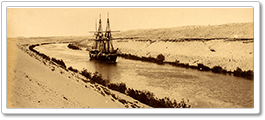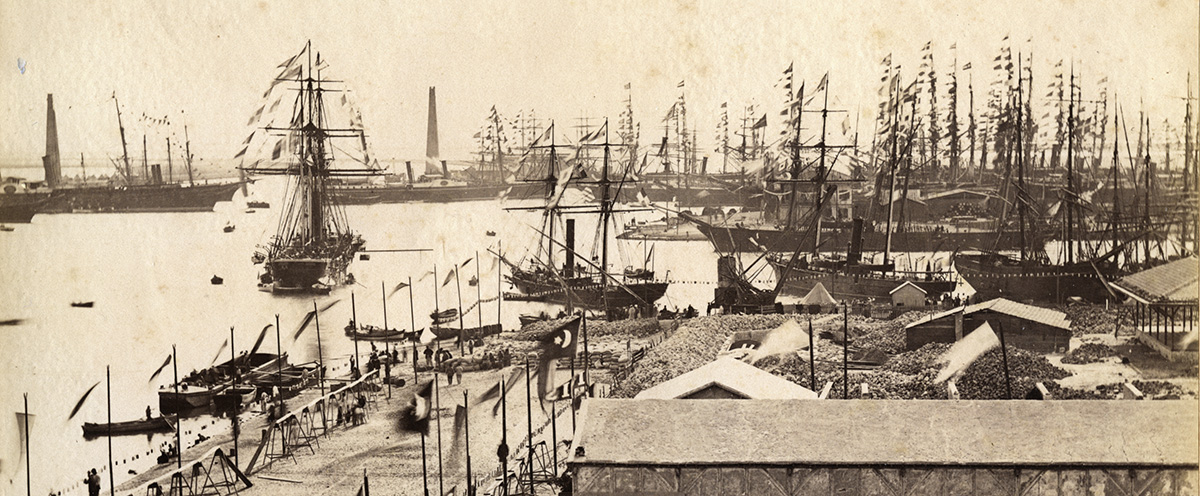17 November 2019,
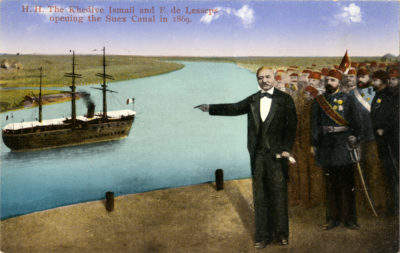
A hand-colored postcard showing Ferdinand de Lesseps opening the Suez Canal with the Khedive Ismail and his entourage. Norbert Schiller Collection
Today marks the 150th anniversary of the inauguration of the Suez Canal. On this day in 1869, dignitaries from around the world gathered at the northern entrance of the canal, in Port Said, to join the first flotilla to transit the newly constructed seaway connecting the Mediterranean to the Red Sea. Canal architect Ferdinand de Lesseps, Egyptian Khedive Ismail Pasha, and French Empress Eugenie were the honored guests. Also in attendance were Ottoman Sultan Abdel Aziz, Austrian emperor Franz Joseph, the king of Hungary, the prince of Prussia, and the prince and princess of Holland and Hannover, to name a few. Besides royalty, attendees included famous writers and artists such as French painter Jean-Leon Gerome, German egyptologist Richard Lepsiu, French writer Theophile Gautier and hordes of journalists invited to cover the spectacle.
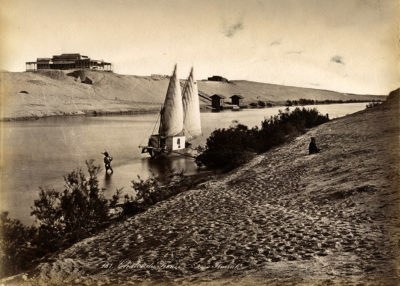
The small sailboat with darkroom used by both the photographers Arnoux and the Zangaki brothers to travel along the Suez Canal. Norbert Schiller Collection
De Lesseps was granted the concession to build the Suez Canal almost exactly 15 years prior to inauguration. However, the actual work didn’t begin until five years later in 1859, and in the beginning the progress was painstakingly slow. It wasn’t until mechanized steam dredgers were introduced in the mid-1860s to replace the Corvée, a feudal system that forced unskilled farmers to work for free, that the canal began to take shape. At about the same time that mechanized dredgers were introduced, the first photographers began documenting the construction. Ermé Desiré and Louis Cuvier, both from France, and Justin Kozlowski were the first photographers to work in the canal zone. Shortly before the opening, Hippolyte Arnoux, another French photographer opened a studio in Port Said which remained active until the 1890s, and he was followed by the Zangaki brothers from Greece who launched their studio after the inauguration. Arnoux and the Zangaki brothers eventually procured a small boat together which they sailed up and down the Suez Canal photographing ships and scenery along the shoreline. The small sailboat, which can be seen in the background of many of their albumen prints, was equipped with a darkroom to process negative glass plates.
This exhibition features nearly 100 photographs taken in the 19th century, beginning in 1867-68. The images are from my personal collection and consist mainly of albumen prints with a few carte de visite and lantern glass positives.
PHOTO EXHIBITION
The Suez Canal in Pictures:
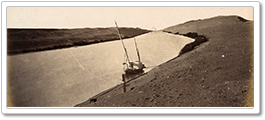
READ MORE
The Suez Canal, Celebrating 150 Years:
